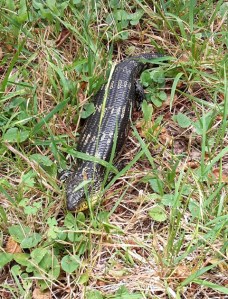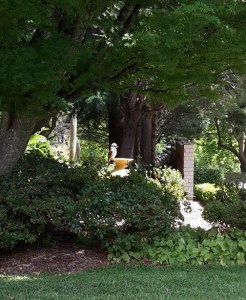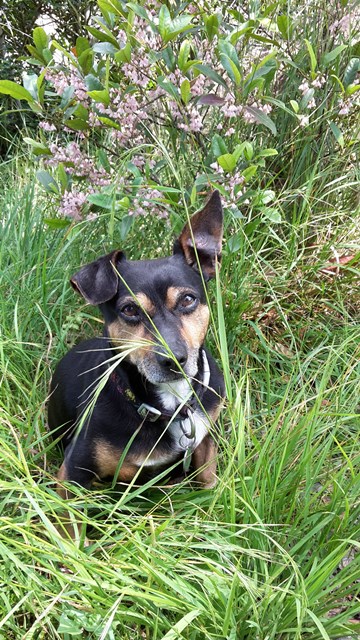I have left the native grasses (an Austrostipa species that I have tentatively identified as A. nitida and Microlaena stipoides) volunteering in one section of the garden and added other natives. Willow herb is volunteering as is a daisy like flower I was hoping might be one of the native Podolepis sp.but on closer inspection it is the introduced Smooth Hawksbeard (Crepis capillaris). There are always a few flatweed (Hypochoeris radicata) plants volunteering too. The hawksbeard is increasing in numbers and is easy to pull up so we will begin to remove it.
We do encourage some self seeding flowers that stray no further afield. The orange Californian poppy has been very useful in this regard and the pink and purple Linaria purpurea introduced by an iris expert are also starting to reproduce. We have introduced a pale yellow Californian poppy and we have scattered seed from a red Californian poppy in the hope that we might introduce a few more colours to the mix. Our soil is still not good enough for a great success rate with scattered seed but once established I think they will manage their own reseeding. The red Californian poppy is part of a plan to add more reds to compliment some preexisting berberis. We have cut the berberis back into mounds and planted a red striped and highly scented floribunda rose called “Scentimental”, scattered seed of the red Californian poppy and seed of Cosmos bipinnatus “Velouette”. Only a few seeds have germinated but Tom took a photo of our first striped cosmos on Friday with the rose in the background. The photo of the rose has the berberis in the background and the original orange self seeding Californian poppy.
Other red flowers in the gardens near by at the moment are a red bergamot I am keen to establish more thoroughly and the old red floribunda rose.














































